Leased Ad Space

Everybody and their brother has a blog these days. And everybody wants to turn their blog into a gold mine.
I remember the day I started my blog.
I was running a marketing consultancy. I felt like I was spinning my wheels. I wanted to grow revenue passively instead of trading hours for dollars.
Even then, ten years ago, people were making money blogging. But even though I was supposed to be a marketing consultant, I hadn’t earned a penny from blogging.
I finally decided it was time to practice what I was preaching.
So I got online, built my blog, and started writing.
Ten years later, I’m still doing it.
And ten years later, my blog is still really profitable.
You’ve heard the story before: One person starts blogging, and somehow it takes off one day. That’s how people like Tim Ferriss and Brian Clark got their big break.
And you think, “I can do that too!”
Here’s the good news: You can definitely do that. You could very well be the next Tim Ferriss with a multi-million-dollar empire at your fingertips.
I can attest to this. Blogging played a crucial role in my success. If I hadn’t spent so much time blogging, I wouldn’t be where I am today.
But there’s also some challenging news: It takes a lot of work. These blogging titans got to where they are today because of lots of blood, sweat, and tears.
It’s not impossible, but it will take dedication and hard work.
I remember losing sleep because I was writing so much. I remember taking some scary risks, wondering if they were going to pay off or not. I remember investing what seemed like a fortune of my own money, not sure of any returns.
But I made it, and I know you can do the exact same thing.
I’m nobody special. You don’t have to be born with a certain amount of talent to become outrageously successful with a blog.
And I’m going to show you exactly how to do that.
Know your audience
The best blogs I’ve seen all have one thing in common: They know their audience.
This might sound like really basic advice, but it can make all the difference. If you don’t know exactly what your audience likes, you won’t be able to effectively monetize your blog.
In other words, you need to give your readers what they want.
And to do that, you need to know your audience well.
A great way to get more acquainted with your audience is to use Google Analytics (GA) to grab some basic demographics and psychographics.
Log in to GA and head to the left-hand sidebar. Navigate to Audience > Demographics > Overview.
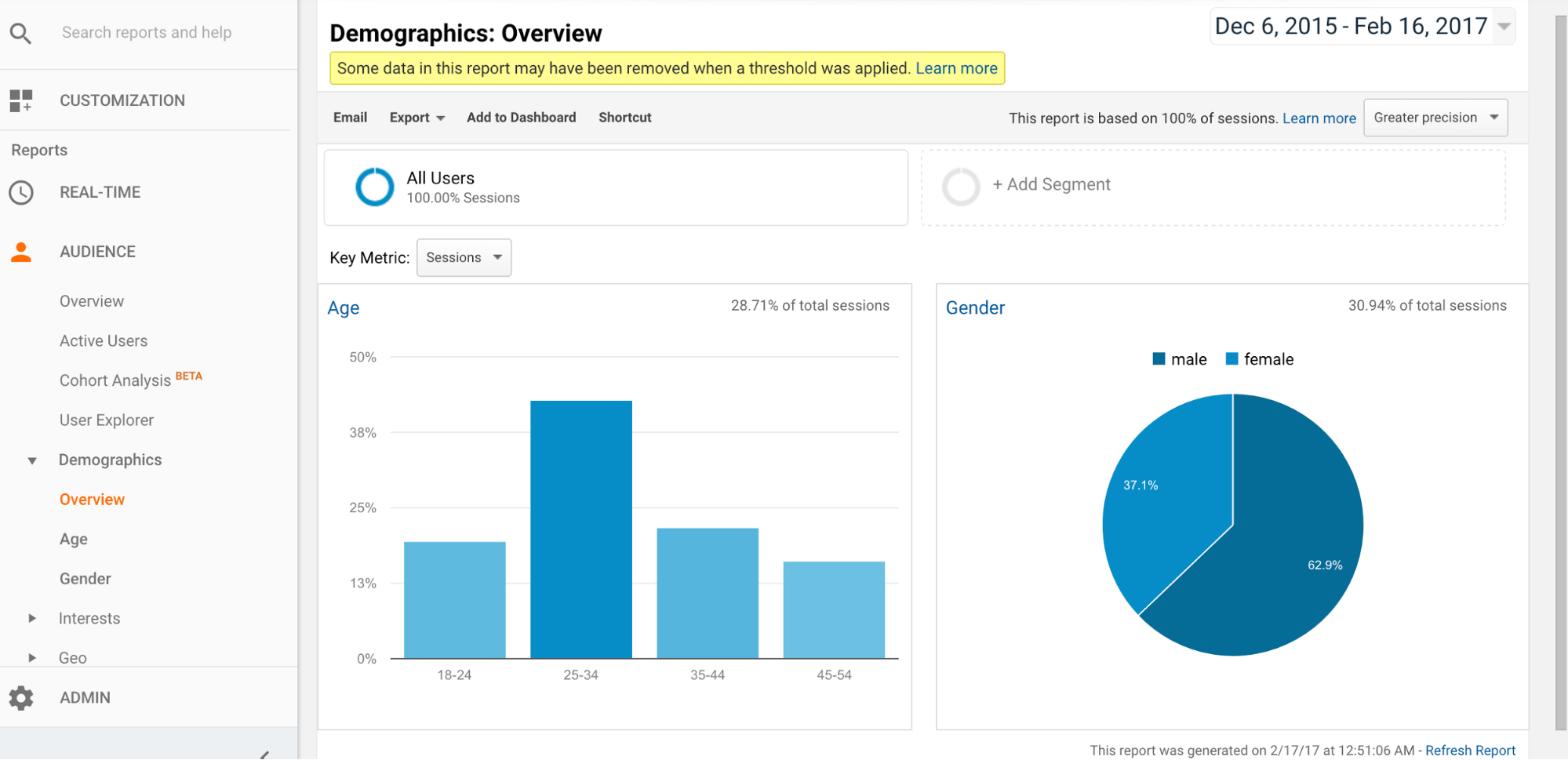
Here you’ll be able to see some basic metrics for age and gender.
You can see more detailed information by clicking on Age and Gender in the two boxes you see here.
To see some basic psychographics, head to Audience > Interests > Overview.
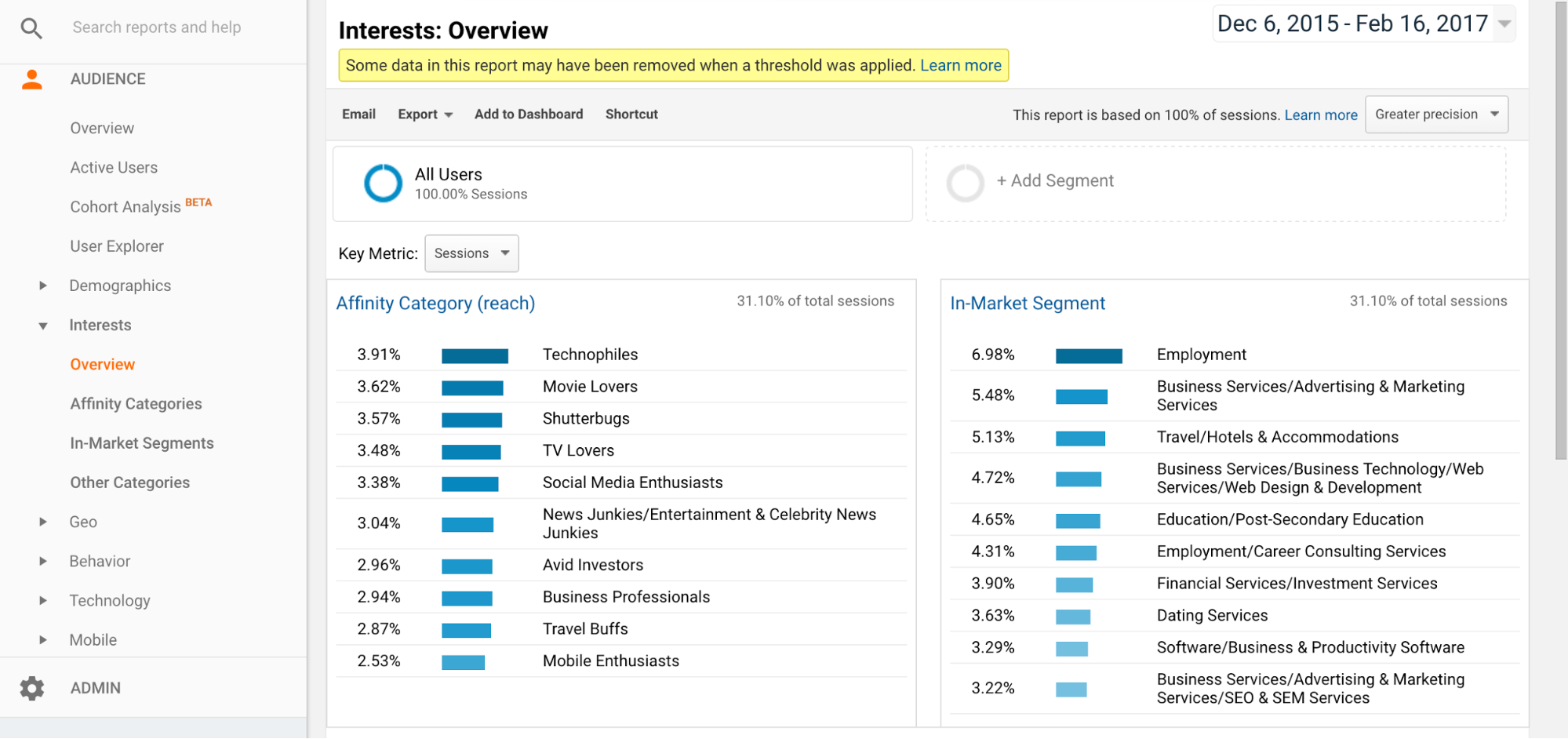
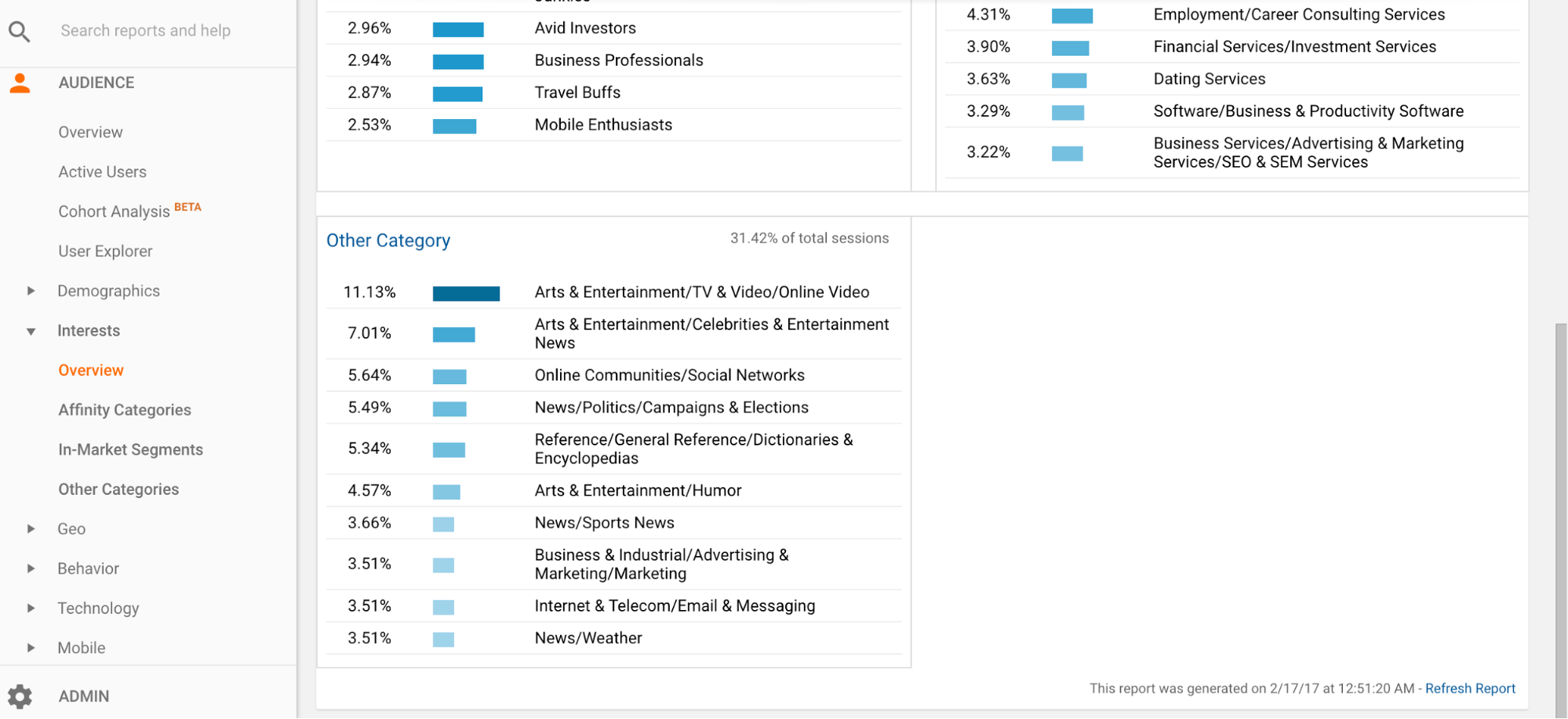
This page displays three categories: Affinity Category, In-Market Segment, and Other Category. Here’s how Google defines each category:
- Affinity Category: Lifestyles similar to TV audiences, for example: Technophiles, Sports Fans, and Cooking Enthusiasts
- In-Market Segment: Product-purchase interests (i.e., people looking to buy something)
- Other Category: Provides the most specific view of your users. For example, Affinity Categories includes Foodies, while Other Categories includes Recipes/Cuisines/East Asian
These come in handy when analyzing your audience. You can get a sense of who your audience is and what they like. Then, you can use that information to make sure you’re delivering the kind of information your audience wants to see.
This is why every successful brand is successful. Marketers put big bucks into audience research because it works.
You don’t need a million-dollar budget to replicate their success. You can do it all with GA and some content marketing know-how.
Once you’ve gotten to know your audience better, you can start monetizing your blog.
Setting up ads
Ads get a lot of flak, but they’re still one of the mainstays of blog monetization. They’re a great way to get started, and if you do them right, ads can actually still be effective.
The trick is to not bombard your users with ads. No one wants to see a site that’s cluttered with blinking ads.
Instead, you’ll use targeted ads to appeal to your readers without annoying them.
The easiest way to get started with ads is to use Google AdSense. It’s hands down the go-to ad platform for millions of bloggers around the world.
Head to the AdSense page and click the big “Sign Up Now” button:

You’ll either need to sign in with an existing Google account or set up a new one:
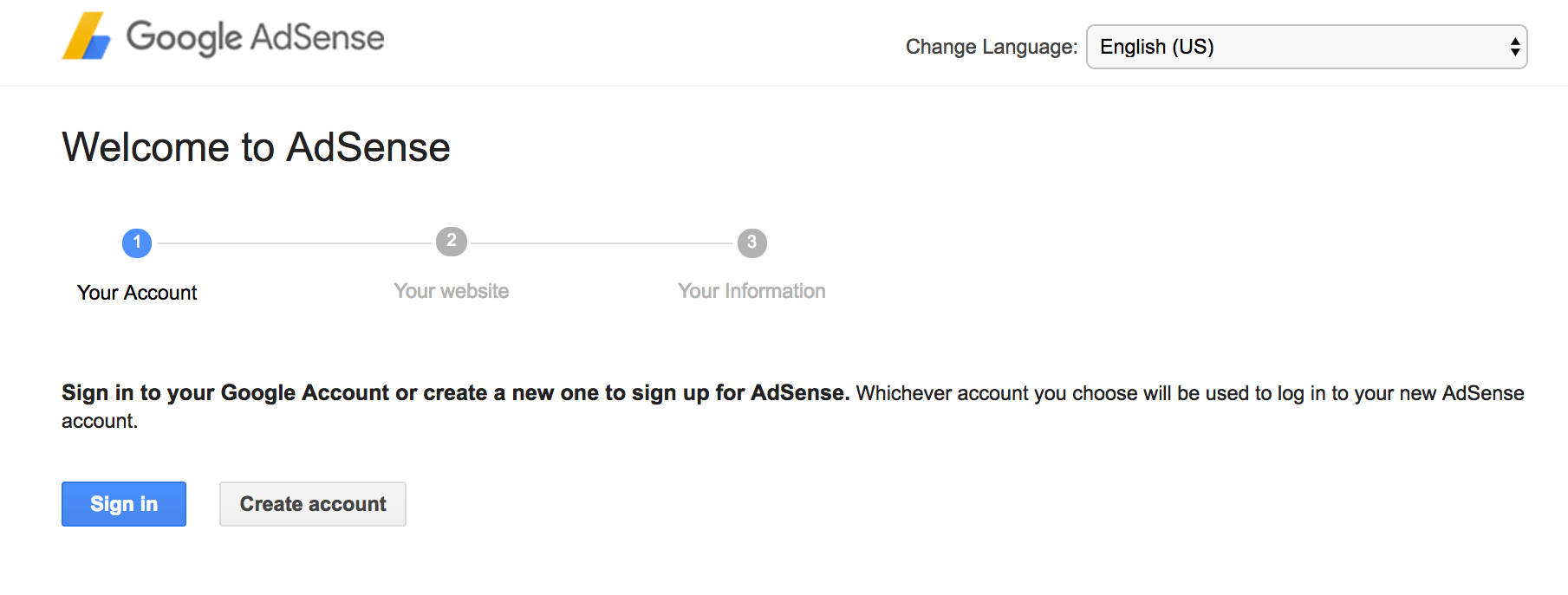
On the next screen, enter your website URL and your language.
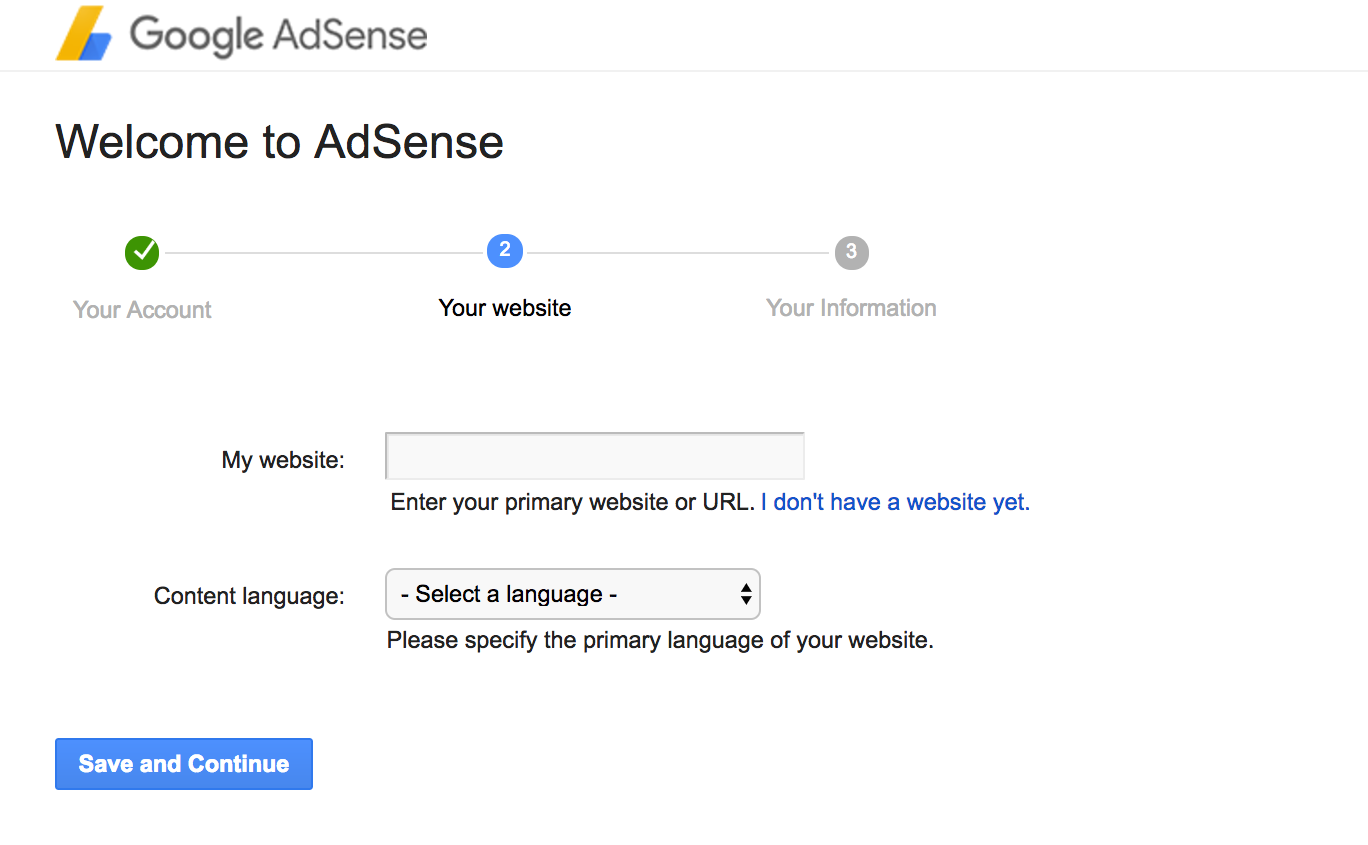
Then fill out some more information:
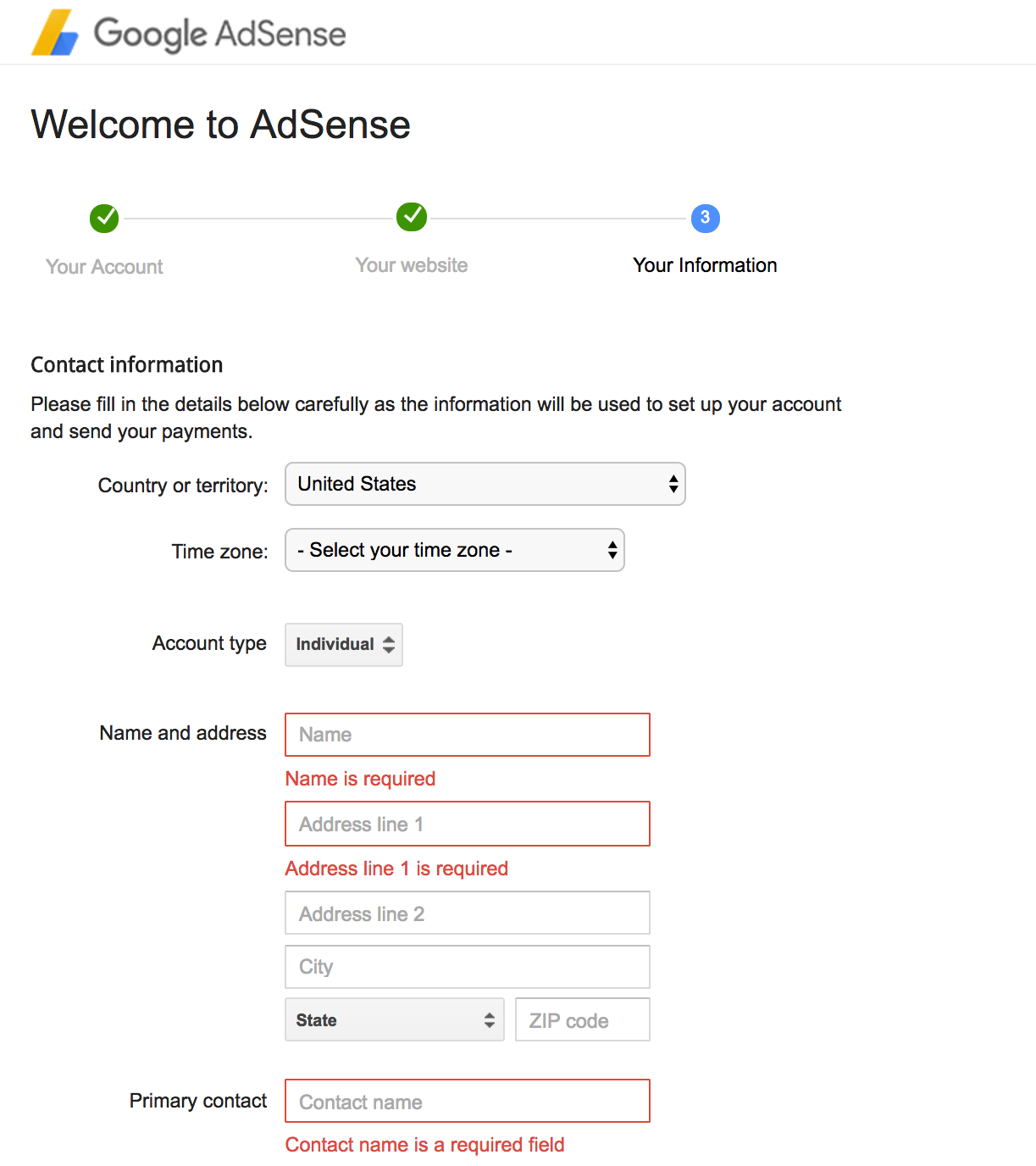
Finally, click “Submit my application.” The AdSense team will review your application, and if all goes well, you’ll be in!
When you get accepted, head to your AdSense dashboard and click on “My ads” in the left-hand sidebar.
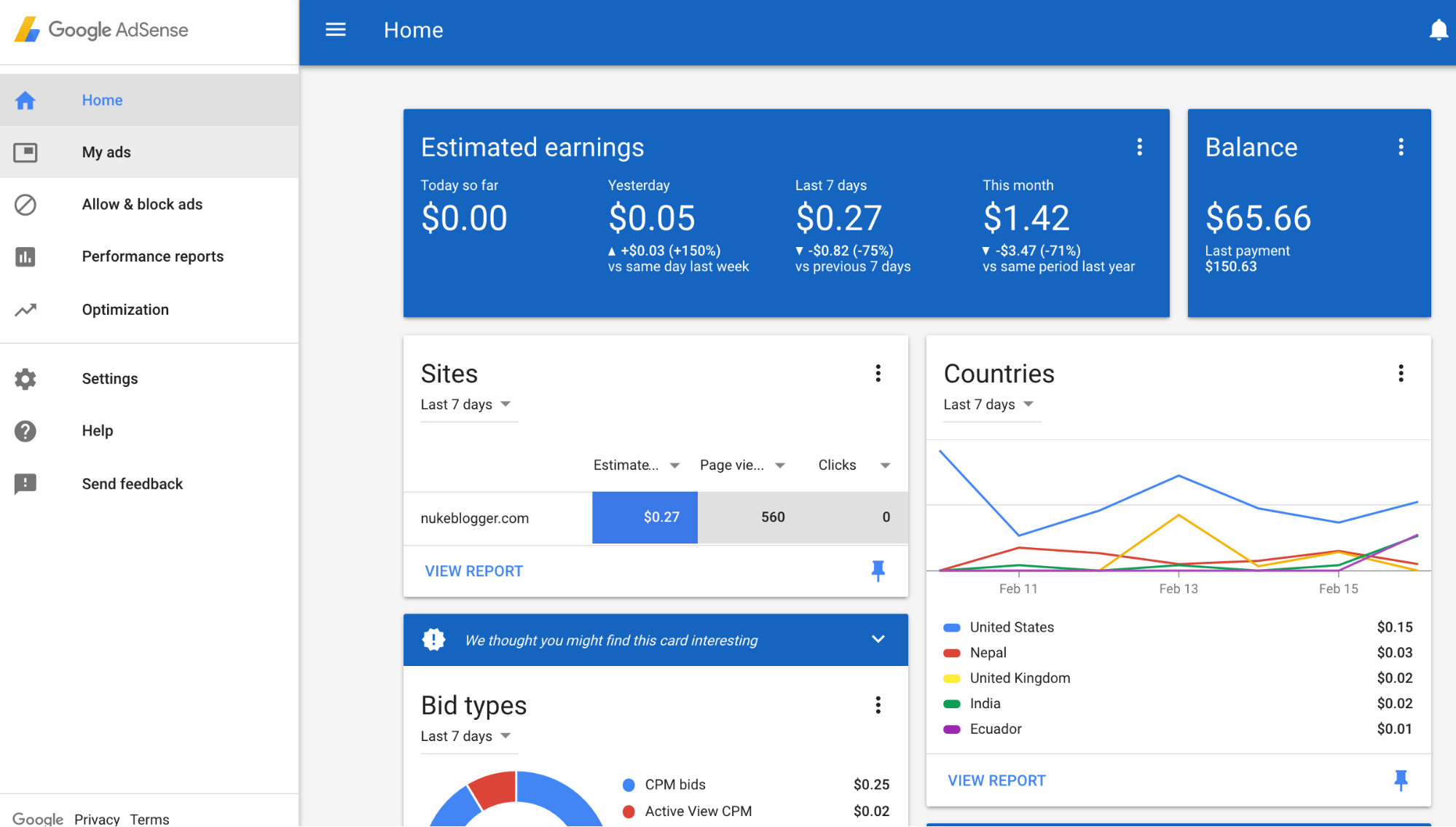
Click “New ad unit.”
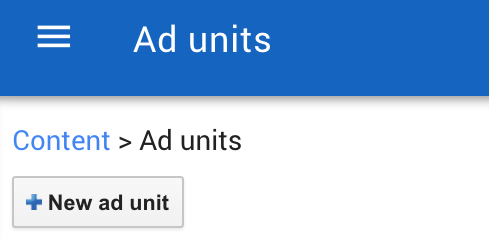
Here you can choose the size of your ad and the ad type.
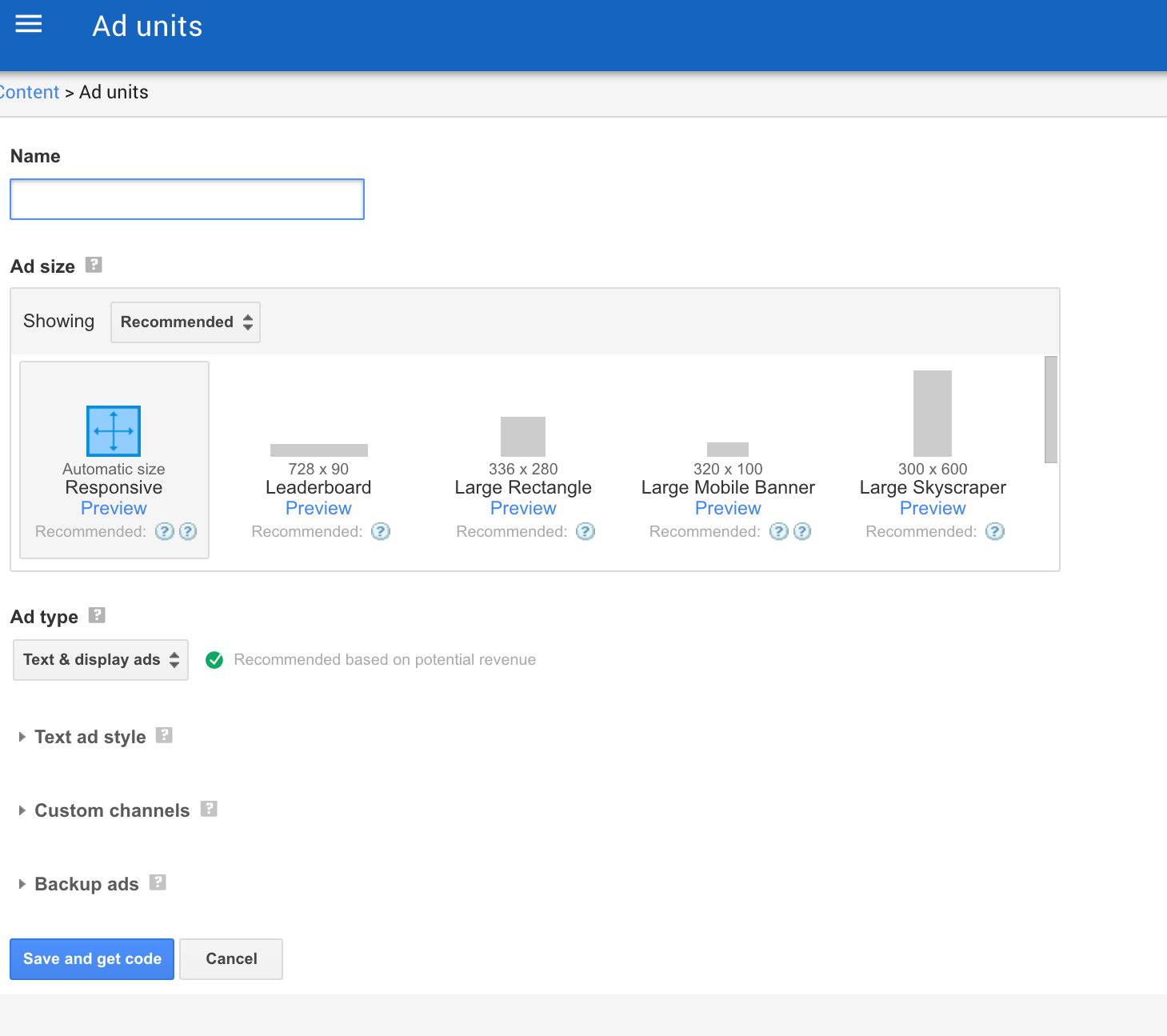
Click “Save and get code.” You’ll get a bit of code that you can then copy and paste between the <body> tags of your page.
Here’s an example from Google of how that should look:
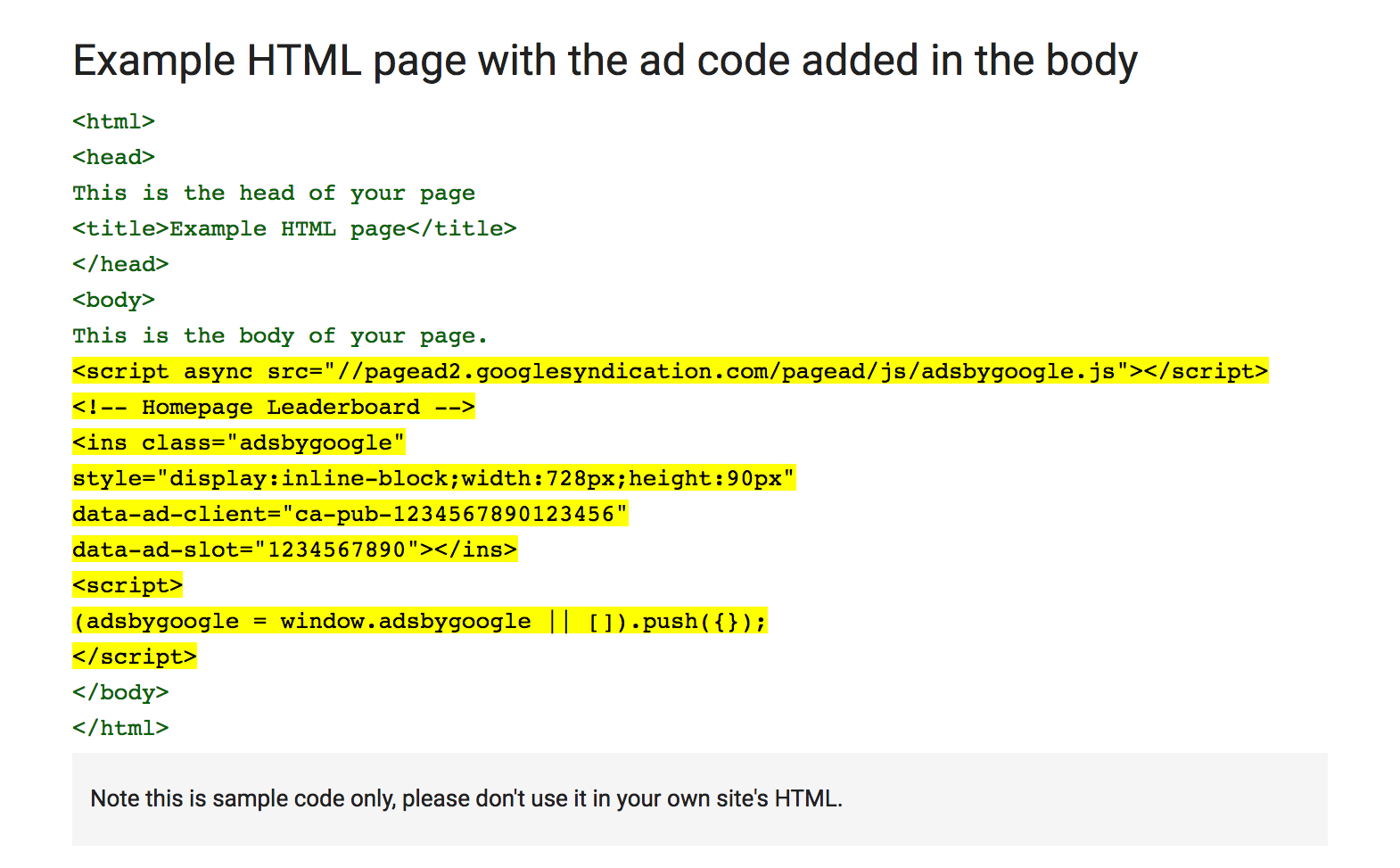
After you’ve pasted the code, your ad will be live! You can check your earnings on your AdSense dashboard.
You can use as many ads as you want, but I’d recommend starting off with just one or two. See how your audience responds to them.
If you see a higher bounce rate in your GA, you might want to use a different type of ad or reposition your current ads. Don’t be afraid to experiment!
Experimentation with ads is the key to success.
Turn on the power of lead generation
When people hear about a “money making” blog, the first thing that they think about are the typical things — ad revenue, affiliate links, etc.
But some of the biggest money-making blogs in the business depend on something totally different — lead generation.
Lead generation through blogging is one of the more indirect methods of profitability, but it’s still really powerful.
How can lead generation make you money?
Simple. Your blog attracts visitors. Those visitors can turn into customers. Those customers give you revenue.
That’s the model.
The process is equally simple.
Instead of getting your visitors to click on an affiliate link or purchase an advertised product, you want to get them to give you their information.
Here is an overview of the process in summary form:
- Create a magnet. Offer to your readers an offer that they can’t ignore — something that they need and want. It needs to be free, and it needs to be appealing. The most common magnets are free ebooks or some other exclusive content.
- Ask for their email address. In order to access the content or download the resource, they must provide an email address.
- Once you have their email address, follow up with them. The most hands-off and effective way to do so is through an email drip campaign. A drip campaign enables you to automatically keep up with everyone who submits their email address.
The people who sign up for your content are now part of your new lead generation strategy.
This method works for all kinds of businesses — digital businesses, brick-and-mortar businesses, selling products, selling services.
Take Derek Halpern, for example. Here’s his lead generation opt-in.

Michael Hyatt has an aggressive but appealing lead gen approach on his blog and other websites. The optins are everywhere.

Marie Forleo does the same thing on her website.

One of the most effective lead generation machines I know is Ramit Sethi.
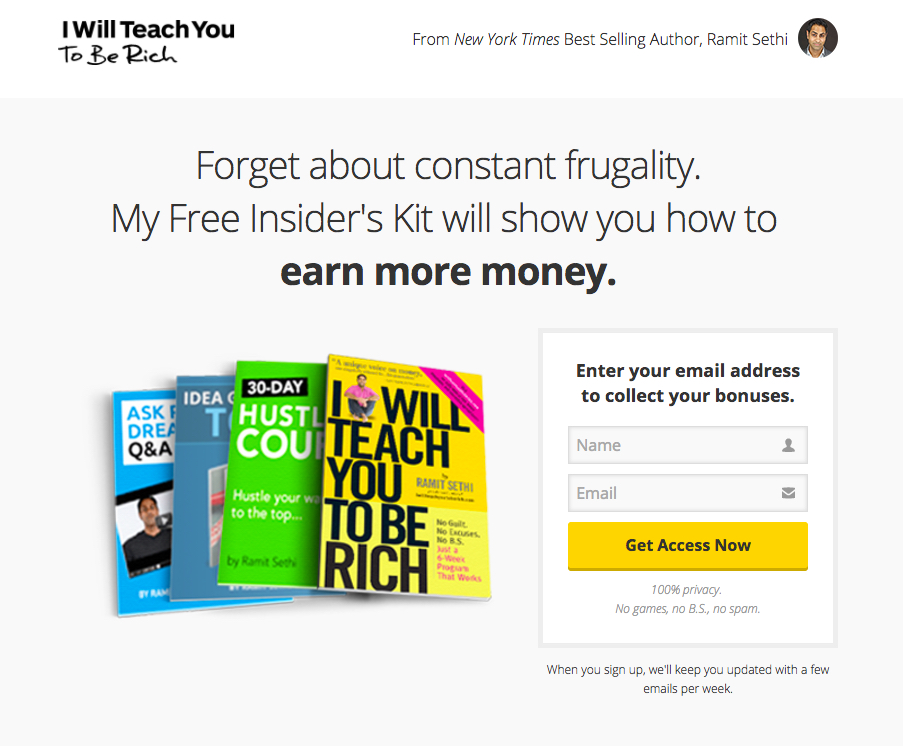
When you sign up for one of his appealing offers, you’ll be placed on his mailing list. And then? Through the power of compelling content, you’ll inevitably be drawn in and purchase one of his courses.
Even if you don’t have anything to sell yet, building a list of leads is a profitable thing to do.
That list can produce your first paying customers, giving you money when you want it.
Leverage the power of affiliates
You’ve heard the saying “two heads are better than one.” In blogging, that means finding affiliate partners to work with.
Some of the most successful bloggers I’ve seen used affiliate partners to grow their sites and get more attention. It works like a charm, and it’s easy to get started.
Don’t worry––you don’t need to know an influencer to find affiliate partners. You can work with other bloggers and entrepreneurs, and there are also a lot of great services to start out with.
One of the most popular affiliate programs is Amazon Associates. Unlike Google AdSense, you don’t need to be reviewed for approval. You can start right away.
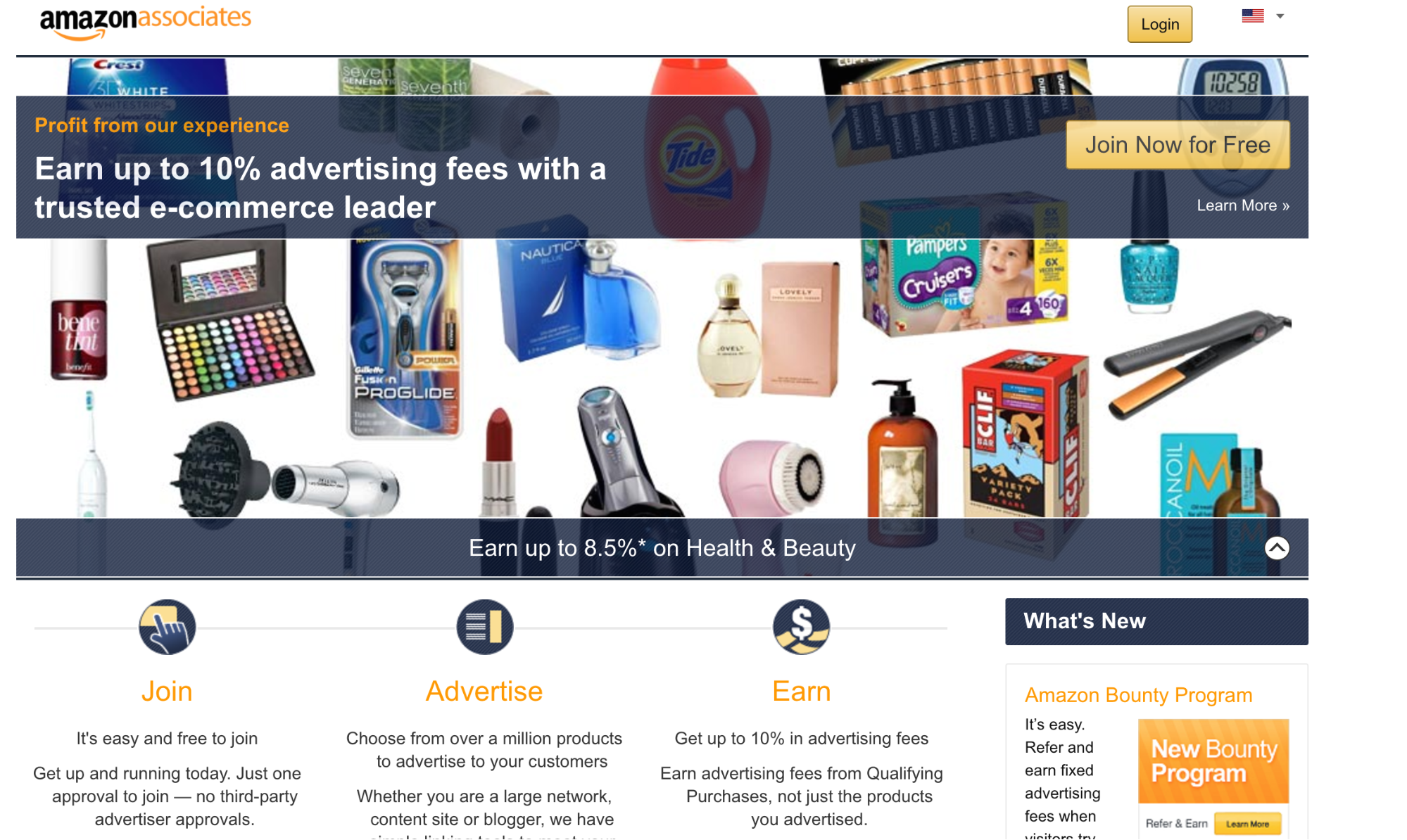
With Amazon Associates, you can get referral links, display ads, and even offer an Amazon-based shopping cart for your readers.
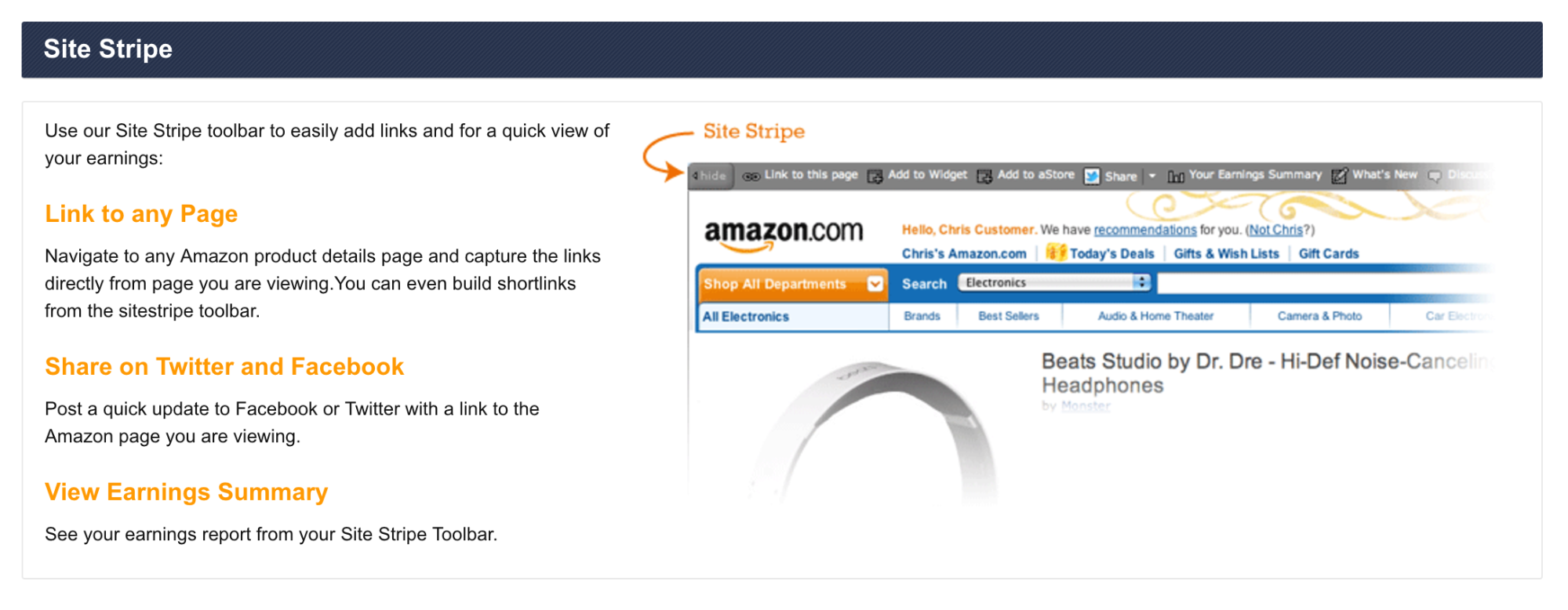
So your visitors can use your referral link to buy things they were going to buy anyway, and you get a small commission.
Amazon Associates is particularly great if you want to advertise products in your niche. For example, if you have a productivity blog, you could advertise daily planners or organizational tools.
To sign up, go to the Amazon Associates page and click “Join Now for Free.”

Fill out a little information about yourself, and you’ll eventually get to Associates Central. This is where you can check your earnings and create links.

This photo is from BrendanMace.com.
Now you can start creating referral links and using the power of Amazon’s program.
Let’s talk for a second about how you should approach your affiliate marketing for best results.
Pat Flynn of Smart Passive Income recommends involved affiliate marketing. Basically, you should only advertise products or services that you’ve used yourself. You should genuinely believe they can help your audience in some way.
I personally think this is the best way because it creates trust. If your audience knows that you’ve used a product or service yourself, they’re much more likely to check it out for themselves.
You can also see if there are any affiliate programs in your niche.
Lots of companies have their own affiliate programs, and they often (but not always) pay higher commissions than what you’d get from Amazon Associates.
Let’s look at affiliate programs in home goods:
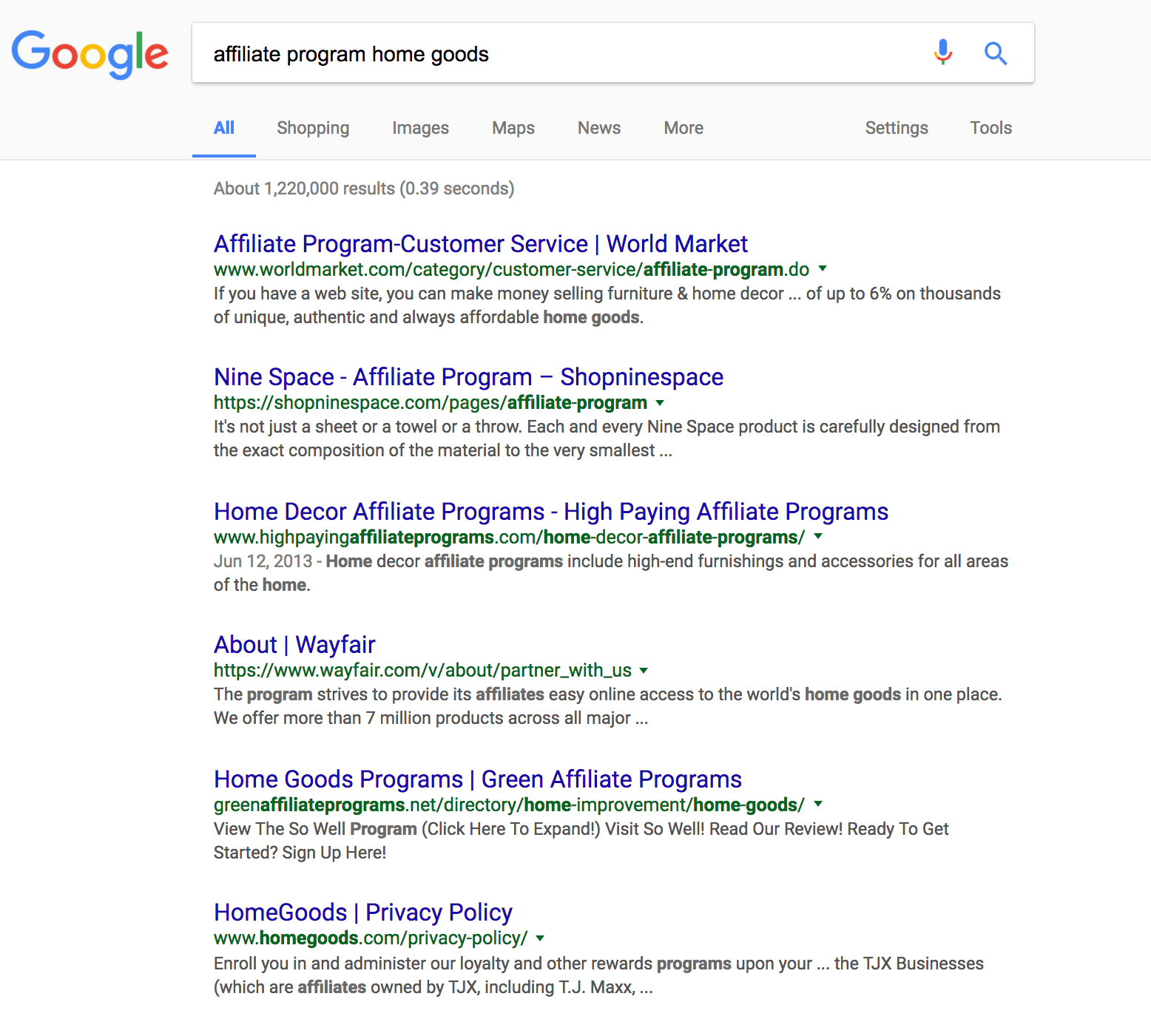
As you can see, there are quite a few. Let’s take a look at the top result from World Market. They direct interested affiliates to Cj.com:
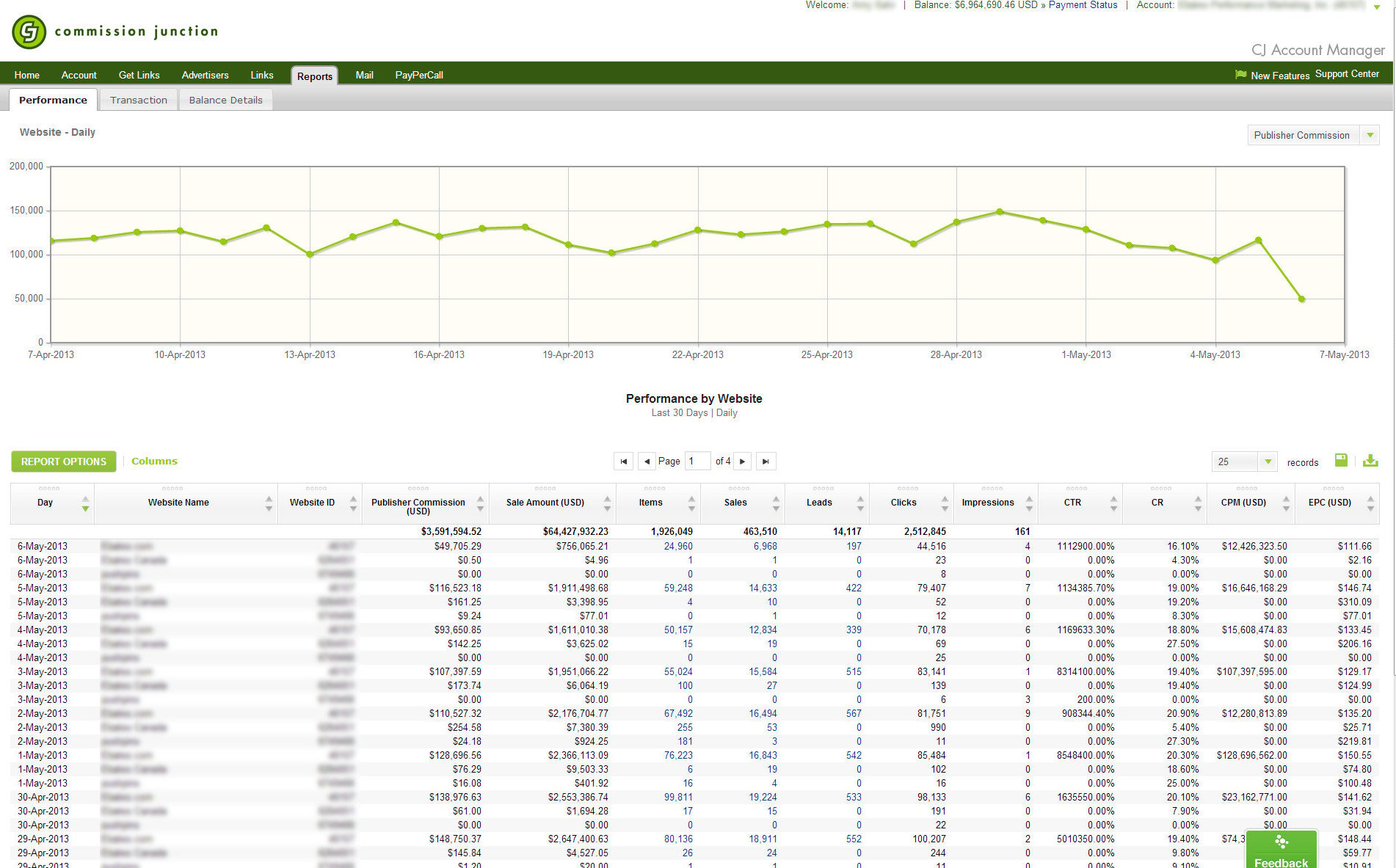
This is World Market’s own affiliate network, and it allows anyone with a website to start selling World Market products online.
There are all kinds of affiliate programs in every niche you can think of, so find an affiliate program that works with your blog and get started!
Sell a product (or a few)
What better way to monetize your blog than to sell a product?
Some of the most successful blogs in the world do just this, and it works like magic.
Nomadic Matt, for example, offers several travel guides:

Your visitors already like your blog. So if you come out with a product that mirrors your blog content, your readers will eat it up.
Take Nomadic Matt’s travel guides. His site is all about travel hacks, and that’s also what his books are about.
The premium content, the really juicy stuff, is reserved for the books, and his readers know that.
Not to mention, you get to keep almost 100% of the profit for yourself.
You’ll most likely have to cover some small fees for software and payment processor fees, for example, but besides that, the money’s all yours.
Here’s how to sell a product on your blog.
First, you have to come up with a product you know your audience will love.
Before you even think up a product, you have to build an audience. You need to interact with them and see what they like.
Once you’ve gotten to know your users better, you can design products with them in mind. Don’t come up with a product just for the sake of selling something.
Create a product that will make your users’ lives better.
For example, Jeff Goins blogs about writing and creativity. To provide a ton of value to his audience, Jeff wrote a book called You Are a Writer (So Start Acting Like One).

The book was a hit, and Jeff went on to create several more products for his rapidly expanding audience.
Jeff didn’t come up with a book just so he could sell it. He came up with something that he knew would benefit his readers.
When it comes to making a product of your own, that can mean all the difference.
With that in mind, you can choose a product type.
Here are some ideas to get you started:
- A book
- A training course
- A video series
- Personal coaching
It’s a great idea to survey your audience before you settle on a product. If your audience likes video but you release an ebook, you probably won’t get too many sales.
Second, you have to decide how you’ll sell your product.
Digital products are cheaper to both manufacture and sell. If you’re selling a digital product, go with a service like Shopify or WooCommerce.
If you’re selling a physical product (like a book), you’ll have to go through a few more steps. ConvertKit has a great guide on selling physical items online.
Third, let your audience know about your product.
Using your email list is by far the most effective way of announcing your product. It doesn’t matter if you have a small email list or a big one.
You can also make a dedicated Store or Shop page to advertise your products.
Once you get the word out and tell your audience what’s in it for them, watch as the sales roll in.
Conclusion
Making the transition from a personal blog to a profitable blog is easier than you think.
And get this. Your readers want to support your blog!
If you have an audience of loyal readers, they will be more than happy to buy your products under two conditions:
- The product will actually improve their lives somehow, and…
- The product will help support you.
It’s also perfectly okay to use more than one of these techniques. In fact, you can use all three at the same time. (Just be sure you’re not bombarding your audience with sales pitches!)
After a while, you might find that one of these techniques works really well for you, or you might find that one doesn’t. Time will tell what works for you and what doesn’t.
Stick with what works, and you’ll have a formula for success.
Monetizing your blog doesn’t have to be spammy. It can be a great thing that creates trust between you and your audience.
If you’re not already monetizing your blog, give these techniques a try. I guarantee at least one of them will give you some good returns.
How are you monetizing your blog?
Get more topics => http://neilpatel.com/blog
About Stephen Thomas
An advertising and marketing company that is dedicated to helping small businesses by providing high-quality products, services and tools to increase sales and exposure to their business.



